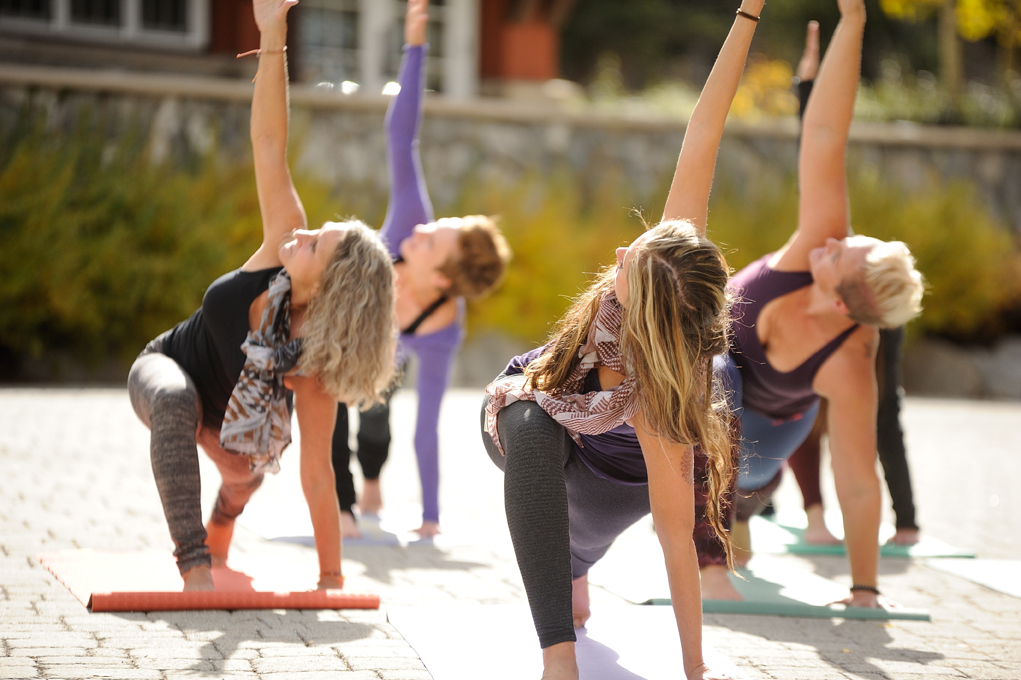
In almost every class I teach, when I ask what people in class would like to focus on, twists are high on the list. Whether we twist while standing, sitting or lying down, spinal rotation often feels like a remedy for whatever ails us.
Why do people love twists so much? I speculate that one reason is that we just don’t have that many opportunities to rotate our spines in daily life. Sure, we turn to look behind us while we’re driving sometimes, but for the most part, we keep our bodies in the sagittal plane. So twisting feels like a refreshing change.
Rotating the spine is one way to release tension in the soft tissue around the spine and increase our general mobility, particularly in the upper body. Twisting stimulates circulation, especially in the muscles, fascia and organs of the abdomen and thorax. Spinal rotation also compresses our internal organs to stimulate digestion. Some say that this squeezing action detoxes our organs, which may be true, although there’s no scientific evidence to support this claim.
How Your Spine Is Designed to Rotate
It’s important to understand where rotation actually takes place in the spine. A popular alignment “rule” instructs you to keep your hips squared while twisting in order to create more of a twist in the lumbar spine. Unfortunately, because the facet joints in the lumbar spine prevent that section of the spine from twisting more than about 5 degrees, the result of this action, over time, is to cause the sacroiliac (SI) joint to bear the twist. Rotation of the SI joint can, over time, destabilize the joint and cause dysfunction, which can cause a number of painful conditions, such as sciatica.
The thoracic spine, the part connected to the ribcage, is designed for rotation. So when you twist, keep in mind that this is where you should focus your efforts. Rather than keeping the pelvis squared in twists, allow it to move in the direction of your intended rotation, while focusing the twist in the thoracic spine.
Parvrtta Anjaneyasana is a great pose to explore this concept because your hips have lots of room to move. Here’s how to practice Parvrtta Anjaneyasana:
How to Twist in Parvrtta Anjaneyasana
- Stand in Tadasana at one end of a nonskid yoga mat.
- Fold forward into Uttanasana. Bend your knees so that you can place both hands on the floor next to your feet.
- Step your right leg back three or so feet, so that your left shin is vertical and your whole body is angled at a slant.
- Placing your right hand on the floor or on a yoga block, lengthen your torso as you rotate it toward your left leg, allowing your pelvis to rotate along with the torso. Your left hip will be higher than your right hip.
- Keep your right leg active. Extend back through your right heel.
- You can place your left hand on your hip, or if you like, you can extend it straight up toward the sky. Take care not to throw your arm back in order to open your twist further. Instead, let your thoracic spine lead the rotation.
- Breathe and relax. You may feel that your torso wants to move in and out of the twist as you exhale and inhale. Relax your pose enough so that you can feel your body oscillate in rhythm with your breath.
- Take 5 to 10 deep breaths.
- Unwind, turning the torso back so that it’s resting over your left leg.
- Step your right leg forward and relax in Uttanasana with your knees slightly bent.
- Repeat on the other side.
There are many arm variations to this asana. I chose this simple variation because it gives you lots of latitude to move and explore. Placing the opposite elbow on the outside of your front knee can force your spine into a twist it may not be ready for. It’s much easier to maintain length in your spine with your arms in the position I suggest here.
